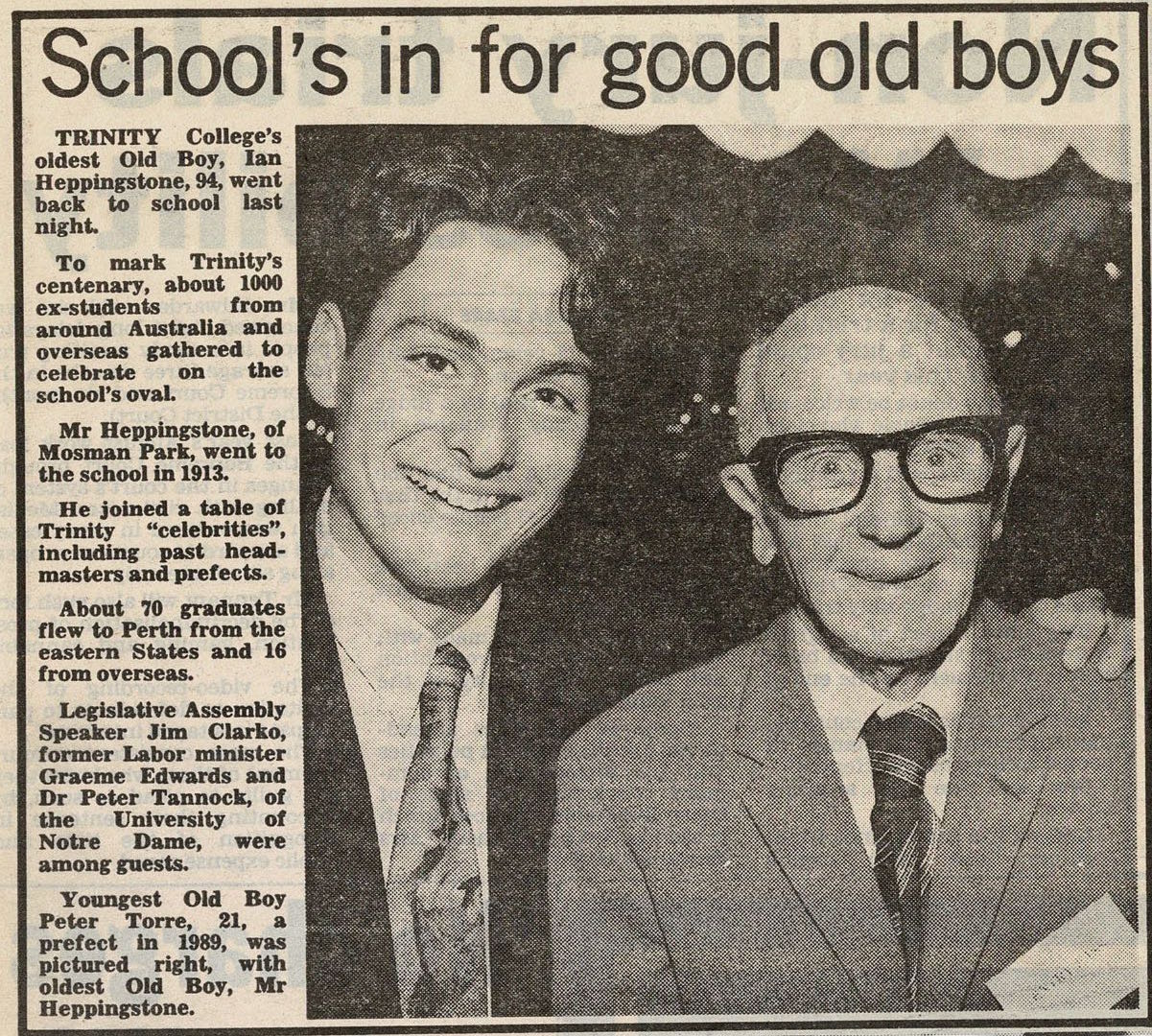The Soldier's Details

- Surname:
- Heppingstone
- First Name:
- Ian David
- Nick Name:
- Pop
- Rank:
- Private
- Regimental #:
- WX8525
- Classification:
- Rangetaker
- Company:
- ‘C’ Company, No. 12 Platoon
- Enlisted:
- 18.10.1940
- Discharged:
- 26.04.1946
- DOB:
- 22.07.1900
- Place of Birth:
- Bunbury, Western Australia
- Father's Name:
- David Eedle Heppingstone
- Mothers's Name:
- Adelaide Louise Heppingstone (nee Swinson)
- Religion:
- Church of England
- Pre-war Occupation:
- Prospector
- Singapore:
- Selarang Camp Changi; Johore Bahru; Adam Park; Selarang Barracks Changi
- Force:
- ‘D’ Force Thailand, S Battalion
- Camps Thailand:
- Tarsau (spent twelve months at this camp due to illness); Tamuang; Chungkai; Konkoita (road repairs); Kanchanaburi; Petchaburi, Kachu Mountain Camp, Bangkok
- POW#:
- 4/6215
- Return Details 1945:
- Thailand-Singapore by aircraft (admitted to 2/14th A.G.H. 30.9.1945); Singapore-Fremantle, H.M. Hospital Ship Karoa.
General Description
Heppingstone enlisted AIF Oct 1940 and later joined 2/4th’s ‘C’ Company No. 12 Platoon.
Please read about 12 Platoon.
Ian Heppingstone was born into one of WA’s pioneering families. Educated at Trinity College 1913, Hale School 1914-15 and Perth Modern School in 1916-17. He later studied medicine in Melbourne and went jackarooing in Queensland, returned to WA mining area at Kalgoorlie before enlisting.
He was recorded in 1936 and 1937 Electoral Roll at Yilgangie Queen Gold Mine, Yarri, Mine owner. His father David Eedle was at the same time prospector, also at Yarri.
You can read more about Yarri area.
David Eedle Heppingstone died 24 July 1939 and was buried at Kalgoorlie, having spent many years of his life in the goldfields region His father was born at Donnybrook in 1873. David Eedle Heppingstone and Adelaide Louise Swinson married 1899 at Bunbury.
They had two children, Ian and daughter Lesley,
Ian’s mother Adelaide died in 1965 at Bicton, and was buried at Fremantle.
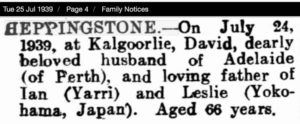

A man of small physical stature, he was more than 40 years old when he joined 2/4th. He became known as ‘Pop’ by his soldier comrades, many of whom were half his age.
A keen historian later in life, he devoted 38 years to voluntary research for Royal WA Historical Society, working virtually every Friday at the Society’s Nedlands headquarters.
He wrote for the society’s journal, Early Days, and was a member of its council for many years. He was made a Fellow in 1978 and appointed Research Secretary in 1981.
He was honoured in 1998 when the society’s research collection on WA was named after him.
His interest in history stemmed from his family’s pioneering roots. His ancestors came to WA with the Molloy and Bussell families on ‘The Warrior’ in 1830s settling the South-West.
His great- grandfather ran a whaling station at Castle Rock on Busselton’s Geographe Bay for 14 years and another relative captained seven whaling boats in the US.
Ian Heppingstone remained single, never owned a car however looked after himself in his own home until just months before his death.
Of his war years he said “there were good Japanese and bad Japanese”.
Go to Stories to read further Heppingston, Ian Local Historian
He was related to Harry De’Castilla WX10721 of 2/4th.
Heppingstone was selected to work on Thai-Burma Railway with ‘D’ Force Thailand S Battalion whilst a POW in Singapore. This workforce departed Singapore mid May 1943, crowded into railway trucks for Bampong Thailand. In terrible conditions, too cold at night and stinking hot during the day this journey took 4-5 days.
S Battalion was fortunate to be trucked to Kanchanaburi and Tarsau where they were to begin the rail building task. Tarsau Camp was to become Japanese HQ for ‘D’ Force and a hospital.
It was here Ian became ill and remained for 12 months. Perhaps a blessing because he missed the horrific Konyu II Camp and the other camps around the Hellfire Pass area. He rejoined S Battalion towards June 1944 at Tamuang and Chungkai Camps. He was fortunate not to be considered ‘Fit’ by the Japanese and was not sent to Japan to work as so many men from S Battalion did. Instead Ian was sent to Konkoita to work on road repairs. Returned to Kanchanaburi he was selected to work at Petchaburi, Kachu Mountain Camp where was recovered from at the end of the war. He was sent to Bangkok before flying to Singapore, before boarding ‘Karoa’.
Below: Daily News Tuesday 11 September 1945

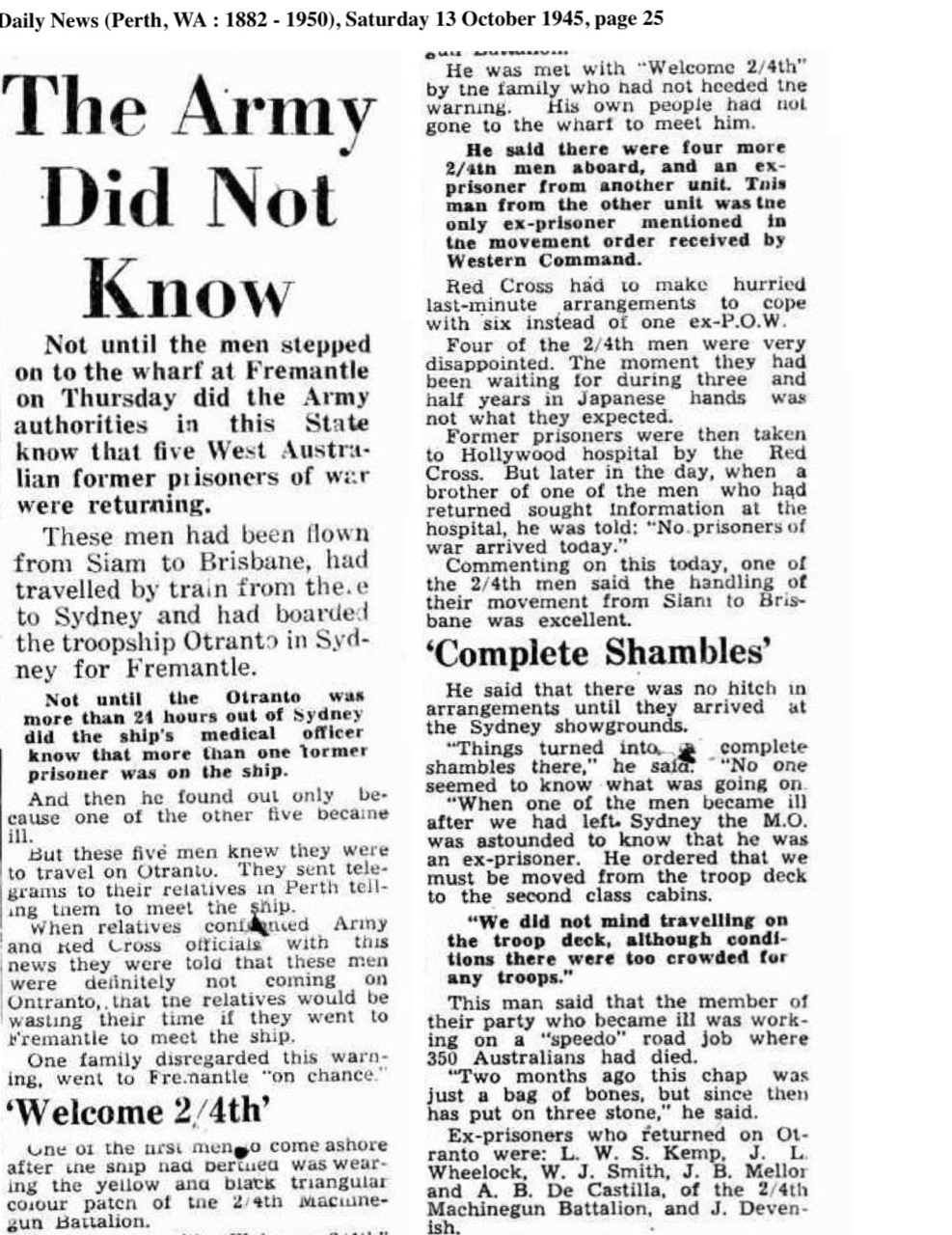
Heppingstone was 12 months at hospital Tarsau – other 2/4th who were sent there included ‘Romeo’ Morris, Dave Whiteman and Strawb Dyson.
Pop Heppingstone died 28 May, 1999 and buried at Fremantle.
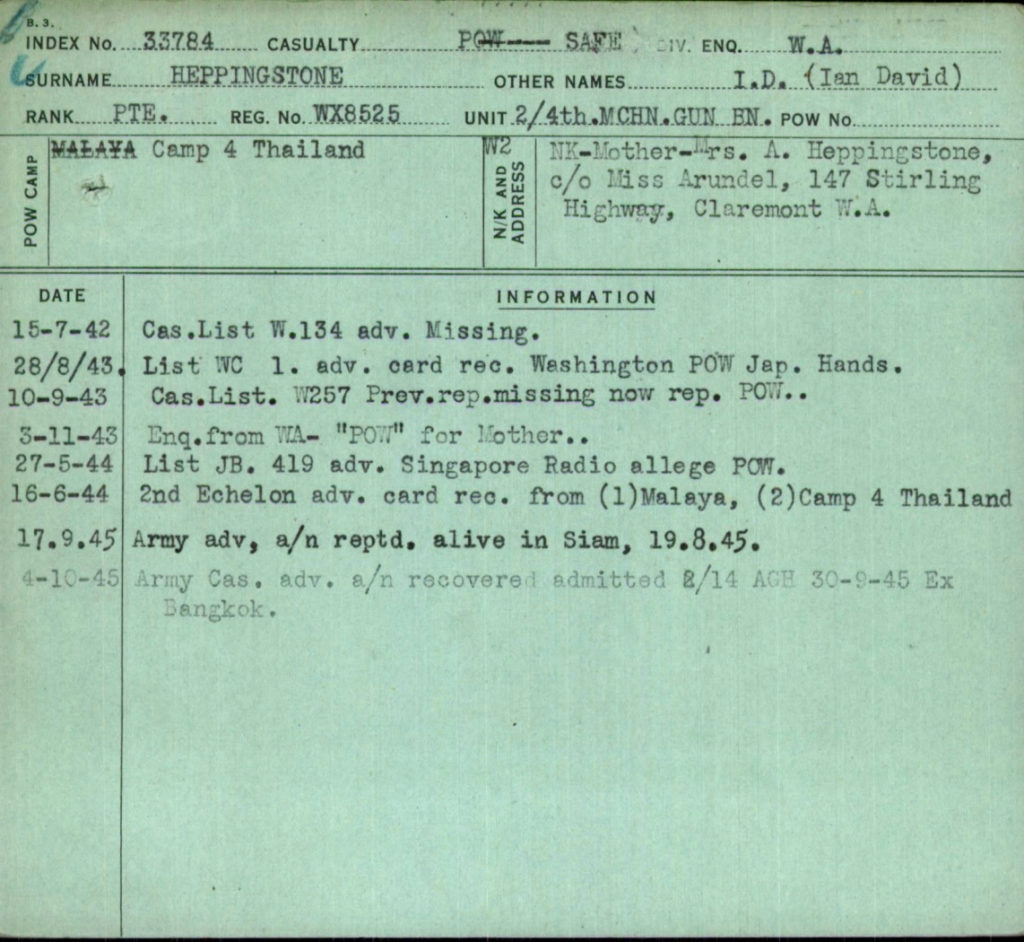
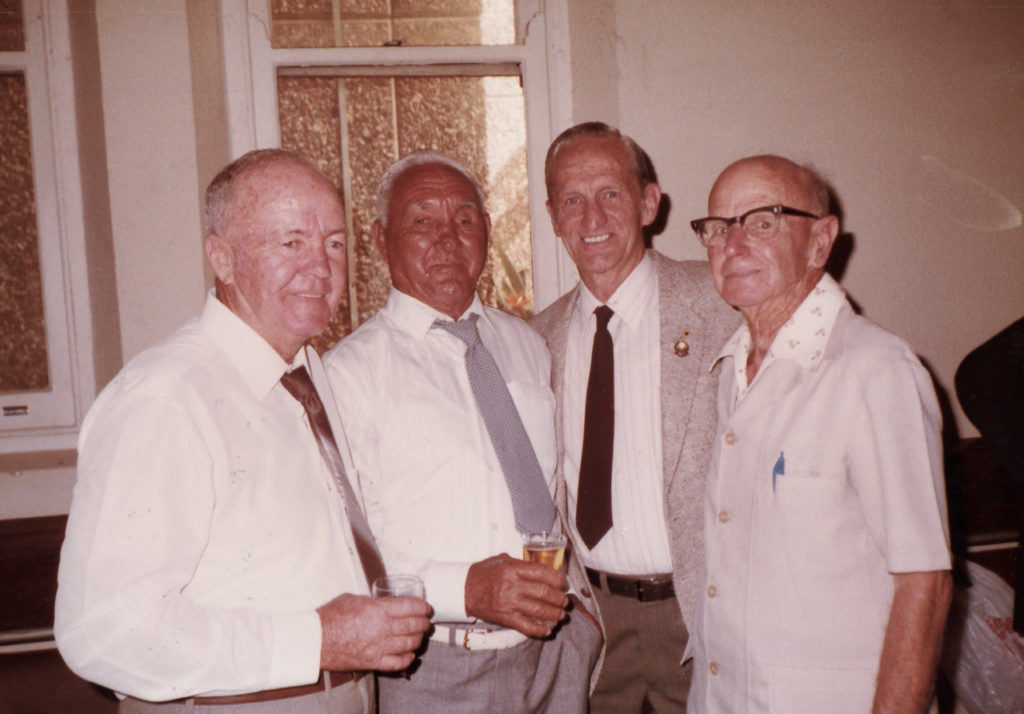 Above: Anzac Day 1985 Reunion – Tom Hampton, Bill Carlyon, Joe Beattie & ‘Pop’ Heppingstone (Beattie Collection)
Above: Anzac Day 1985 Reunion – Tom Hampton, Bill Carlyon, Joe Beattie & ‘Pop’ Heppingstone (Beattie Collection)
Below: several pages of Heppingstone’s handwritten account of his time on the Burma-Thai Railway. ‘Pop’ remained at Tarsau several months while the men of D Force S Btn moved on to work at the Hellfire Pass cutting at Kanu II.
He mentions Strawb Dyson coming to Tarsau Hospital for a short time. Tarsau was the Hospital camp for S Btn Work Force.
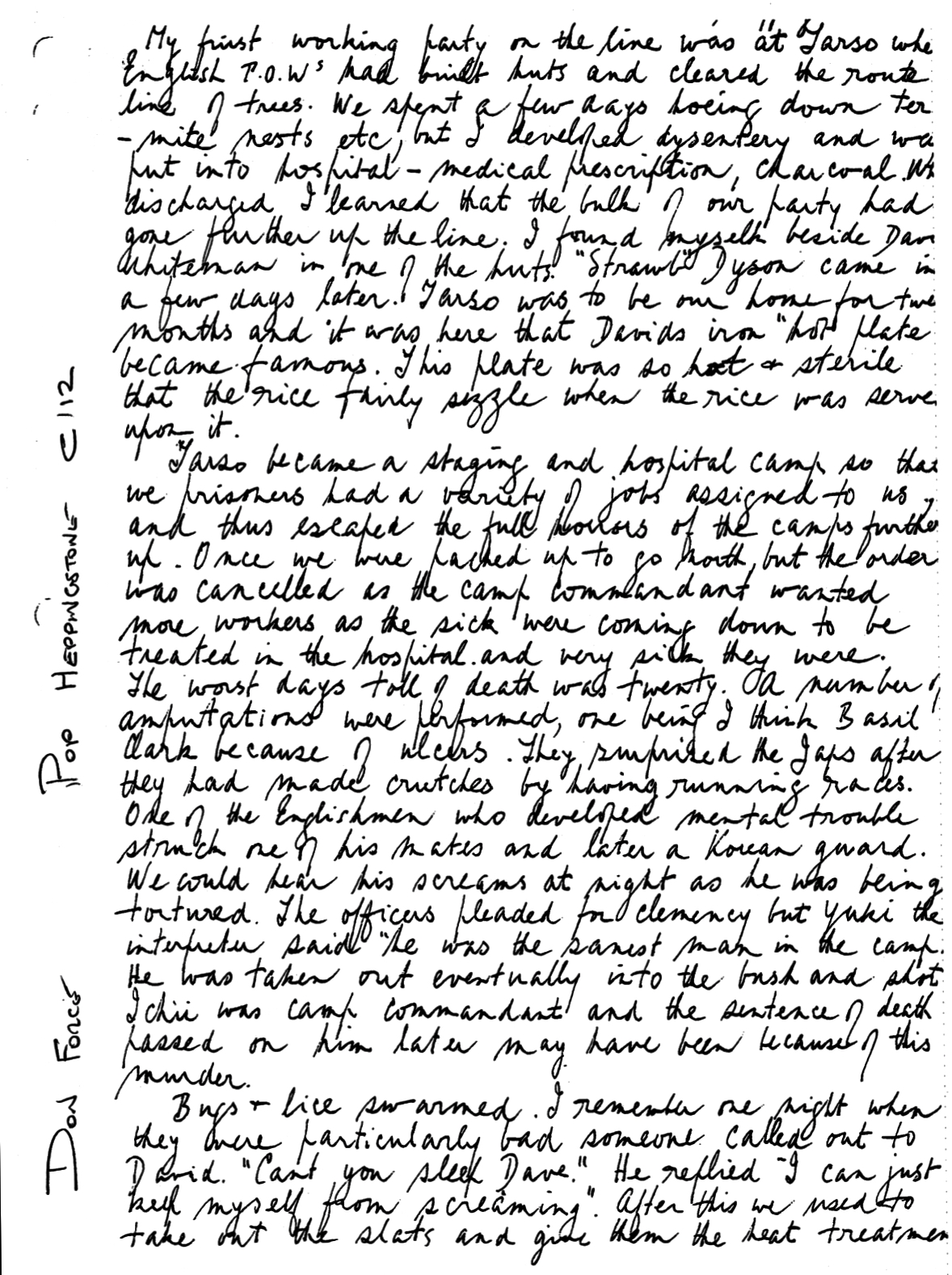
Below: Pop writes about Tamuang Camp.
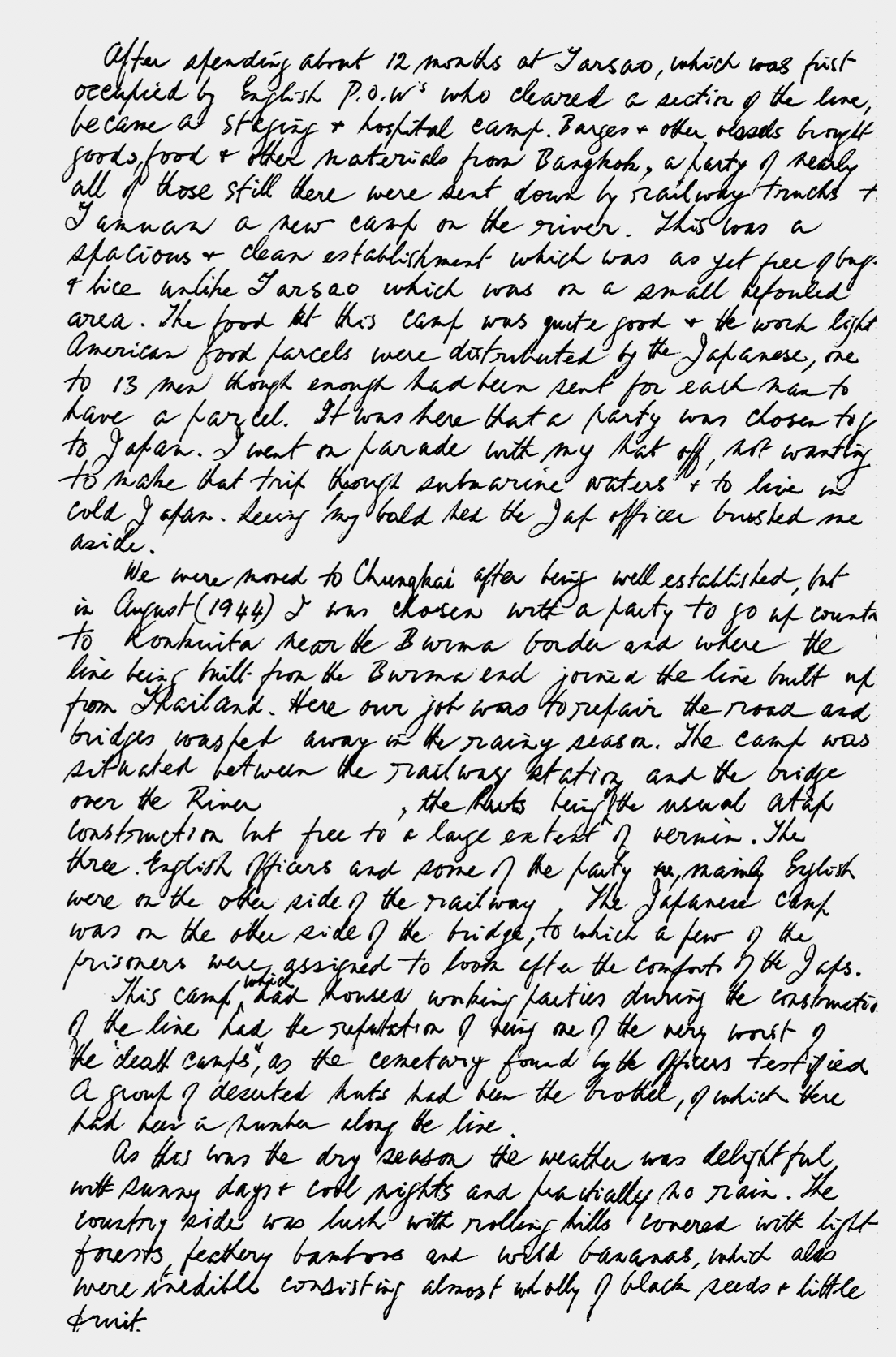
Below: Chungkai
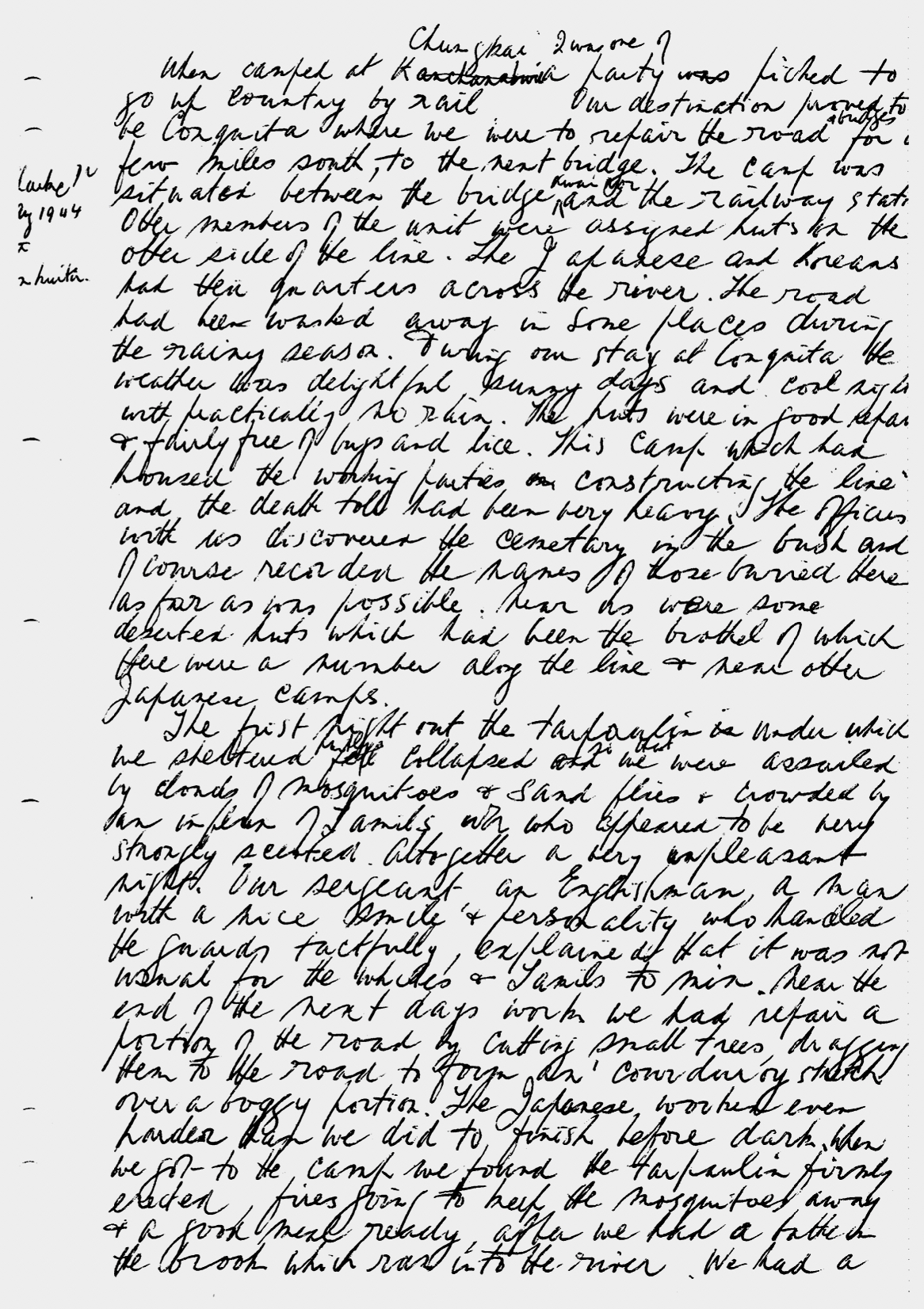
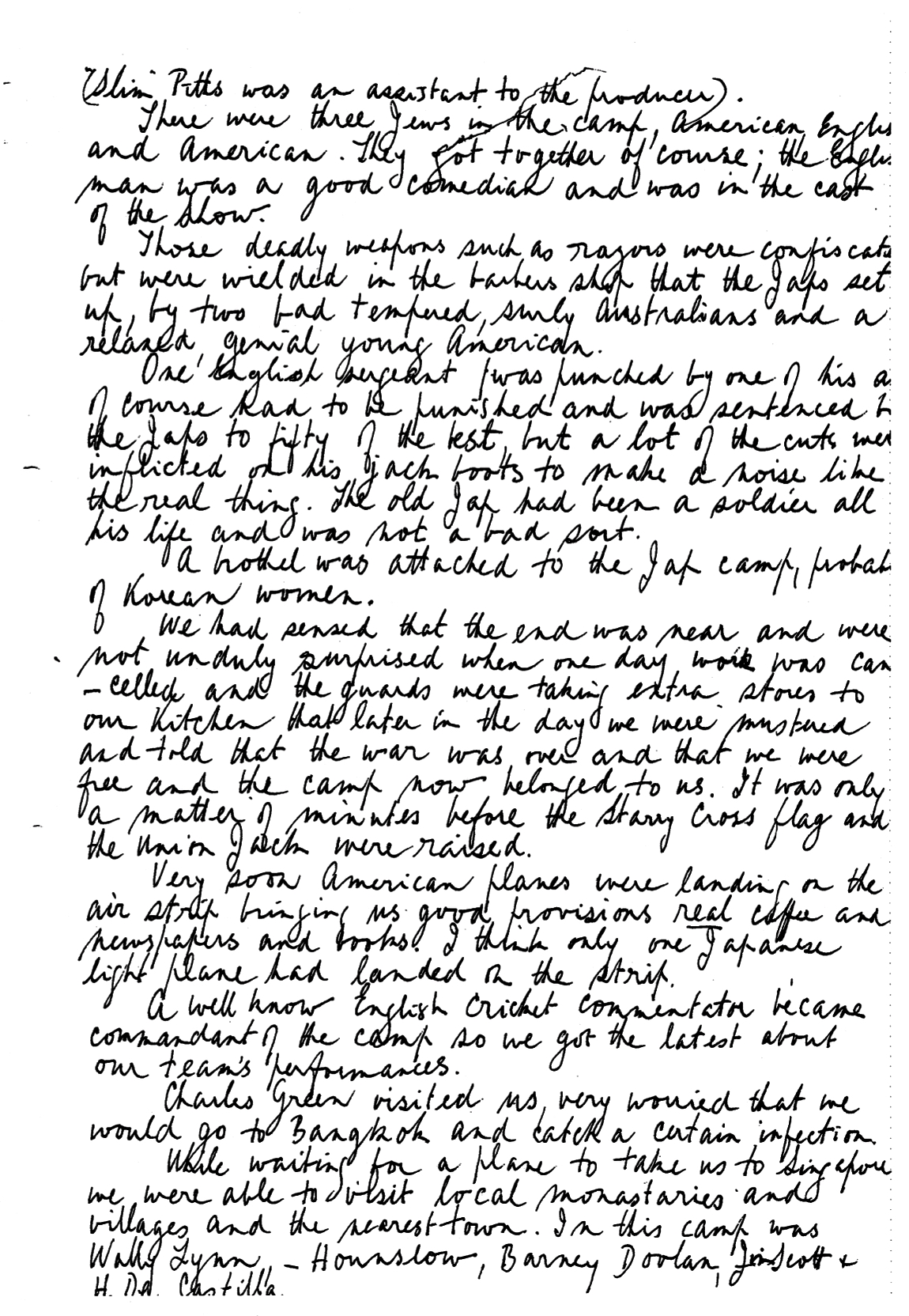
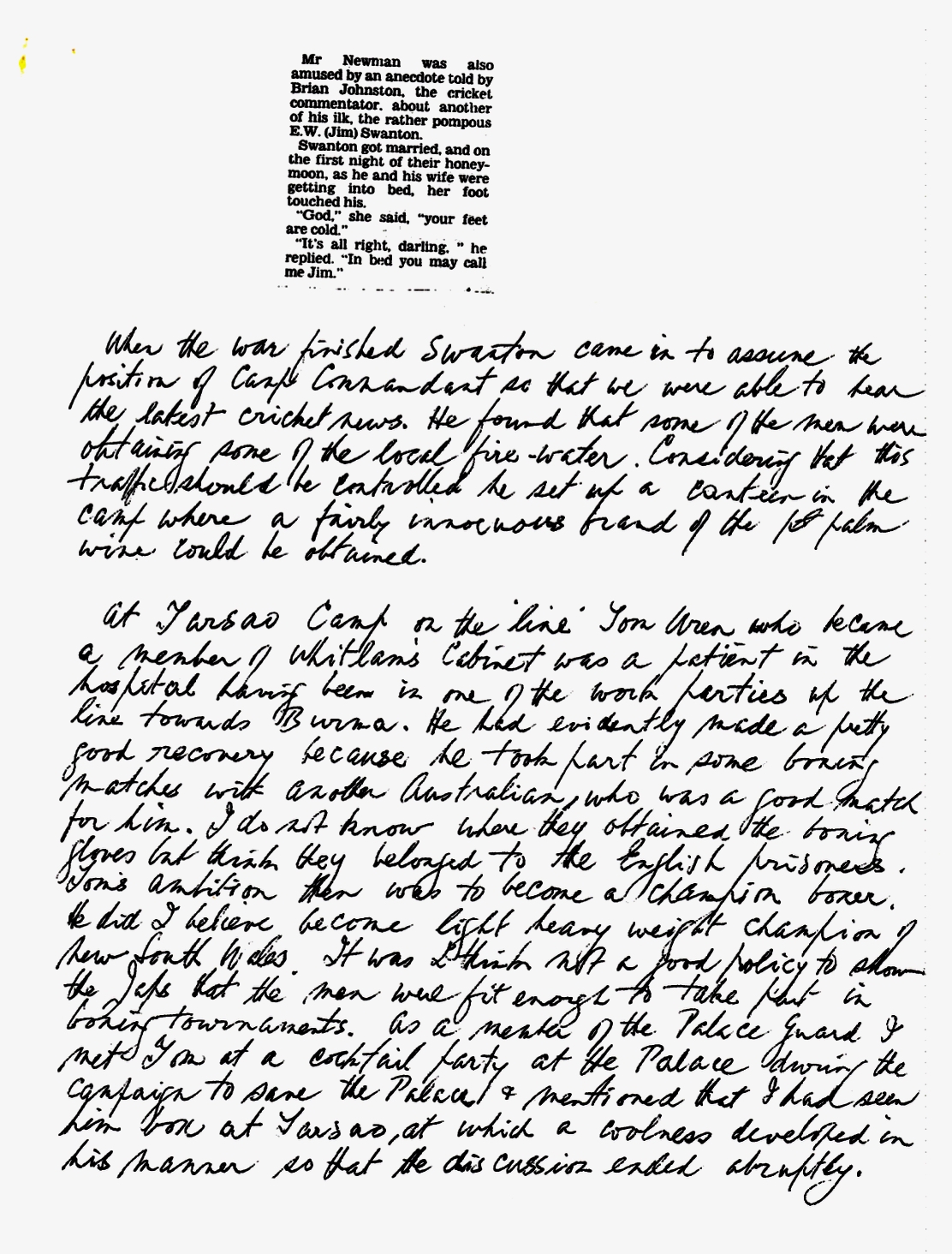
Above: Heppingstone writes about a few ‘notables’ amongst the POWs. Swanston, the famous cricketer and Uren, who went on to serve in Whitlam’s Government. Uren came to Tarsau sick but soon managed to participate in a boxing match with another Australian. Pop saw him at an event and reminded Uren of the Tarsau match -but Uren did not like to be reminded by Pop of his boxing ability and moved away very quickly!
Camp Locations:
- Johore Bahru, - Malaysia
- Selarang Barracks Changi - Singapore
- Selarang Camp Changi - Singapore
- Chungkai, 60k - Thailand
- Kanchanaburi, 50k - Thailand
- Petchaburi - Thailand
- Tamuang, Tha Muang 39k - Thailand
- Tarsau, Tha Sao 125k - Thailand
- Kachau Mountain Camp - Thailand

